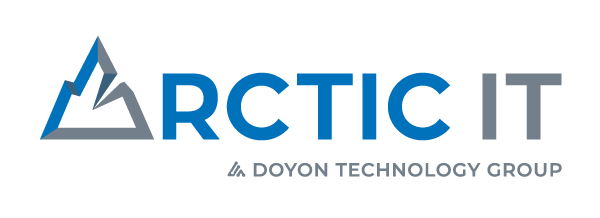Leaders in the state and local government (SLG) sector are faced with a unique opportunity to improve how they deliver services to their communities, and cloud-based platforms are the key to making it happen. CARES Act assistance, now in the hands of many government organizations, can be the driver to real change. Rather than spend this money on short-term fixes, or to put a band-aid on legacy systems, the choice to adapt and innovate technology will serve people better now and for generations to come.
Before funding can be allocated, the mindset of service delivery needs to shift. The applications built to serve government entities are typically built on 20 or even 30-year-old technology. Back then, integrations with other systems were very difficult and fragile to change. In some cases, a passionate employee built a custom solution to meet a specific need. These “point solutions” are typically not integrated and do not include all the security best practices. They’ve evolved into a complex set of custom solutions dependent on the original author to maintain, manage, and upgrade.
In addition to the IT staff’s heavy lift to maintain, these applications typically are not web-enabled, which means they don’t come with the built-in benefits we’ve all come to appreciate from a modern, cloud-based platform. Engaging constituents with web and mobile-enabled applications is becoming an expectation, and for the home-grown legacy applications, a major overhaul is the only way to add this capability.
Legacy vs. Cloud-Based Applications
Let’s look at an example of the user experience with a legacy vs cloud-based application for a small business owner.
Meet Bob. Bob owns Bob’s Ice Cream shop. Bob started the business back in 1999, when the only way to get a business license was to visit the state office, fill out a paper application, and wait in line until his number pops up on the reader board. These steps took many days or probably weeks to complete and likely involved several trips, because Bob did not include all the required documentation in the original application…because he was unaware of the requirements.

Now fast-forward to 2020. Bob’s ice cream business has expanded to 27 locations throughout the state. Business is good, but the complexity to run the business has also increased. Bob lives in a state that has invested in cloud technology, which allows him to:
- Log into the Commerce Department portal page to see which business license is up for renewal,
- Add his new business manager as the license point of contact,
- Upload any required scanned documents,
- Electronically sign the license,
- Electronically pay the required fees,
- Submit for review.
The business rules in the online renewal form ensure Bob updated and submitted any required documents. This allows government staff to quickly review and approve the license which generates an electronic notification of approval, and the license certificate is sent to Bob electronically. Bob was able to complete these tasks at his convenience – and it only required minutes of his time. Plus, the transaction has a full audit history with no physical paper to handle.
In this case, commerce at the state level provides Bob with a Web Portal to complete this renewal. However, this type of technology is not everywhere. When Bob must repeat this process for a county permit, his experience is not the same. His county permit is still handled via paper and requires him to go into the county office. Bob complains to the staff, “When are you going to allow me to apply for my permit renewal online?”
Bob’s experience is all too common. Constituents are pushing to engage via the web or mobile causing pressure for leaders to begin replacing these legacy systems. But with limited budgets, spending money on software is not a high priority.
Legacy System Migration to Cloud-Based Platforms
Organizations faced with the need to migrate legacy systems have three approaches that they can take: rehosting, rewriting or refactoring.
1. Rehost
The easiest approach is to rehost all business applications into a cloud environment, taking applications and the data from local servers and migrating to cloud hosted servers. This approach, known as “lift and shift”, has a relatively low cost but it really does not gain the full benefit of the cloud because it does not take advantage of current technologies especially for complex enterprise applications.
This option may have a lower start-up cost in terms of hard dollars, but the ongoing soft costs of educating and training staff on a new process can make the total cost of ownership quite high.
2. Rewrite
Another approach is to rewrite business applications in a cloud environment, potentially re-architected in a cloud native architecture. If the development staff have done their jobs well, the application will adapt to new cloud environment without major rework. However, with complex applications that include thousands or millions of lines of custom code, a rewriting project comes at considerable cost, introduces significant risk for service delivery, and can take many months.
Most SLG organizations avoid this option as it tends to be the most expensive option. The technology and features may be upgraded but the overall solution features still heavy integration of many moving parts to deliver a full solution.
3. Refactor
The third approach, and one that is increasingly popular with SLG organizations, is to refactor the enterprise application onto a cloud-native application platform. This involves reviewing the original user scenarios and requirements and rearchitect the application to adopt modern platform frameworks and concepts. These new platforms such as Microsoft Power Platform work seamlessly to bridge old and new solutions using components such as APIs and macro/micro-service architecture built in Microsoft Azure that, once deployed on cloud, significantly increase resilience and improve scalability, flexibility and elasticity. This can still take time and introduce risk, but the stability of an application framework can drastically reduce the application delivery compared to the other options.
With the current generation of cloud-based platforms available, refactoring has become a more desirable choice for legacy application migration. The Power Platform includes hundreds of data and functional connectors that can be configured using Agile methods to deliver outstanding solutions in a relatively short period of time. The cost to refactor enterprise applications on this new platform has decreased dramatically as the fully integrated suite of components can be configured in a low-code / no-code environment. Coupled with the flexibility to allow your IT team to easily apply enhancements to adapt to changing requirements lowers the overall cost of ownership of the application solution.
A real-world client example
Recently, a major US county hired my team to help navigate the refactoring of their legacy solution to migrate to the Microsoft Power Platform. In our discovery discussions, the priorities voiced by the county’s IT staff included:
- Adopt a modern platform. They wanted a fully integrated, enterprise application platform that will adapt easily as their organization evolves and processes change. They realized that to jump the curve with constituent service delivery is to adopt an application platform that already includes the latest technology services.
- Implement with experience. They needed an experienced partner to help deliver the significant process improvements to improve service delivery.
- Security is paramount. Security and compliance standards were high priority to reduce risk in moving to a cloud hosted environment while applying industry best practices provided in the platform.
In this refactoring effort to migrate the legacy system to a Microsoft Cloud environment, the county discovered that the overall solution costs were lower than expected, while the end solution will be capable of adapting to constituent needs quickly and at a lower cost of delivery.
Migrating legacy applications to the cloud is a task that most organizations are now facing. Instead of choosing a replacement commercial off-the-shelf (COTS) solution that does exactly what the legacy application provided, consider a secure, cloud-based enterprise application platform such as Microsoft Power Platform to envision a new way to deliver services and community engagement.

By Bryan Schmidt, Principal Solution Architect at Arctic IT

